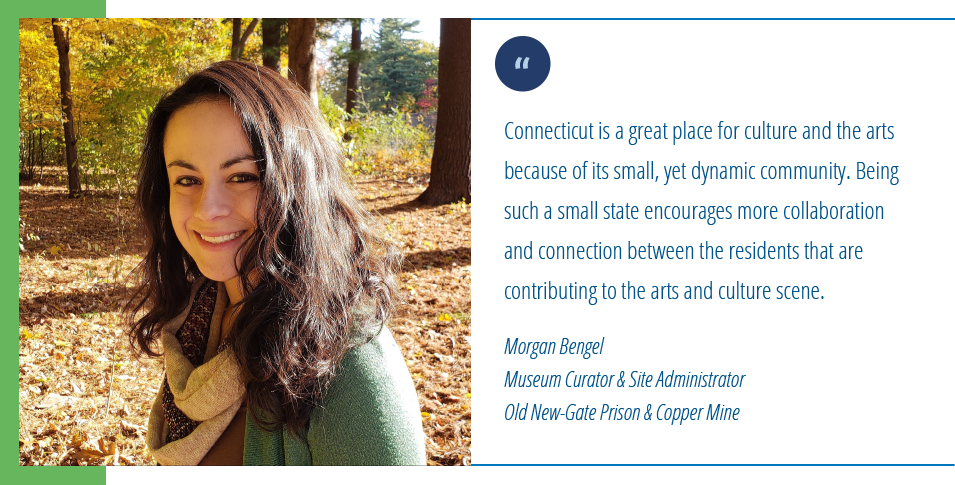
The arts scene in Connecticut is roaring. Young artists are collaborating, creating, and getting into the spotlight. To get a behind-the-scenes look, four arts and culture thought leaders provide perspective on how locals, performers, and organizations are creating the next big thing.
In Connecticut, artists stick together — and they know how to amp up an arts scene. They’re creating new projects, they’re diversifying their programming, and they’re transforming how local artists collaborate.
Connecticut’s arts and culture community is tight-knit. The state’s compact size means a closer network, a less saturated industry, and more opportunities to create new projects that stand out. With influence from major nearby cultural hubs like New York City, artists can be among the best of the best while still making an impact and connecting on a more local level.
Since the pandemic, Connecticut’s art scene has been evolving into something new and beautiful. Not only have more young people become inspired to create and are gaining more opportunities to get involved, but the role of representation and inclusion in the arts has come to the forefront. And the pandemic didn’t just impact artists – it also sparked a craving for the arts among the public, resulting in a warm embrace of creative projects.
The city of New Haven is totally revamping how they look at inclusion in the arts. How? With their new Cultural Equity Plan, which serves as a tool to identify opportunities for equitable change and ways to weave equity into their systems. It’s meant to help begin and facilitate important conversations between local artists and New Haven city leaders and residents.
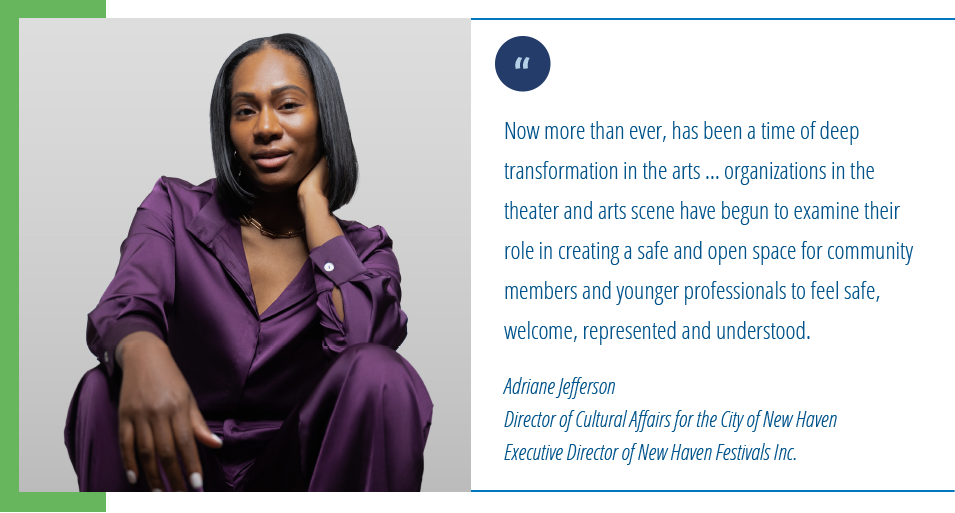
And in Greater Hartford, we’re seeing an influx of events, festivals, and public art. With a growing demand to create “Instagrammable” murals to attract young people to neighborhoods and communities, organizations like RiseUP for Arts are creating new public artwork to cover city streets and make art accessible to everyone. Plus, the organization is getting young people involved by holding events geared toward young professionals in Greater Hartford.
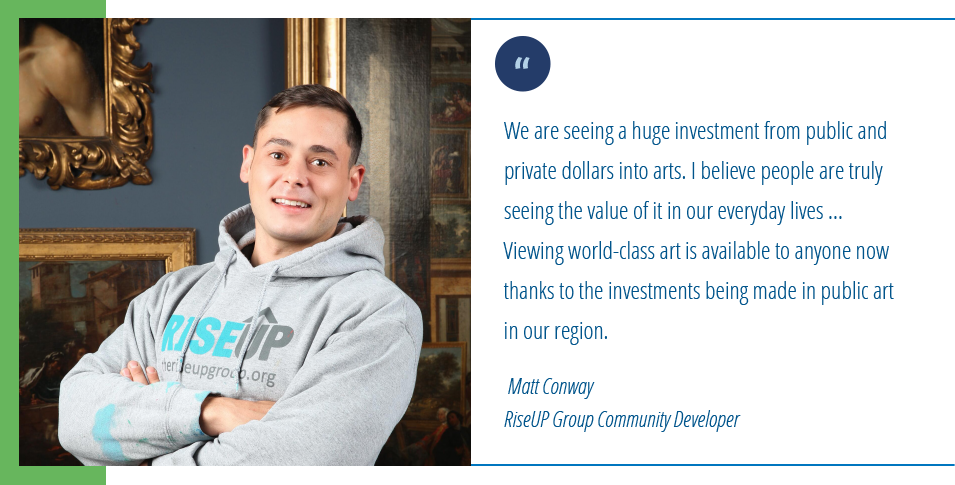
So how are arts and culture organizations shaking things up? By modernizing their work and putting artists in the driver’s seat.
In the performing arts scene, theaters like Long Wharf Theatre are pivoting to an innovative, less traditional model; instead of strictly showcasing productions in their theater, they’re presenting them at venues across New Haven — some more conventional and some out-of-the-box. This allows creatives to lead the charge and explore unique spaces that amplify their works.
Long Wharf is also focusing more on accessibility; they want people of all ages and backgrounds to get involved in their work. Recently, Long Wharf partnered with Southern Connecticut State University to create a new paid internship program, special student discounts to Long Wharf productions, and the opportunity to collaborate on their upcoming benefit.
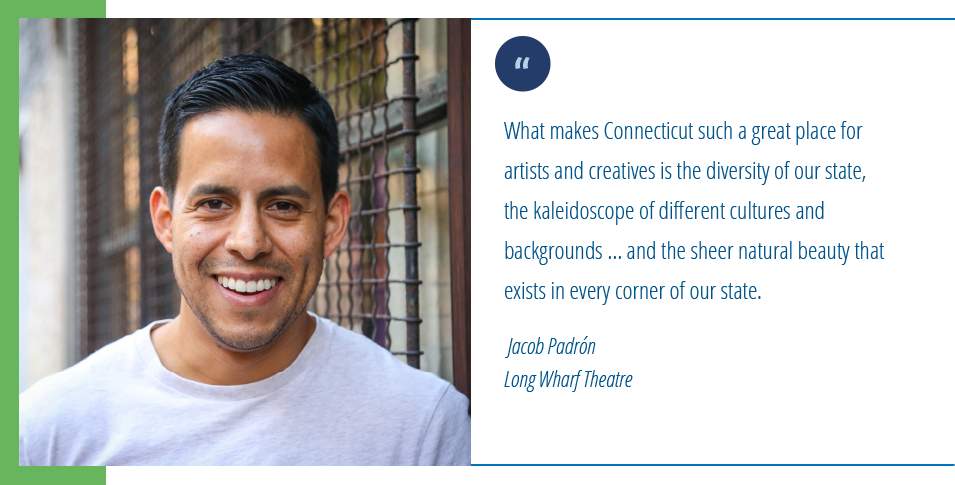
But producing theaters aren’t the only ones taking the stage in Connecticut.
The state is home to six major presenting theatres including Shubert Theatre in New Haven, The Bushnell in Hartford, Waterbury’s The Palace Theater, The Palace Stamford, The Garde Arts Center in New London, and the Warner Theatre in Torrington — all places where artists can be inspired by live performances.
Shubert Theatre, for instance, presents nationally touring productions of Broadway shows, as well as renowned dance companies like Ailey II and Dance Theatre of Harlem, music, comedy, family presentations, and other performing arts. It also hosts national tour launches, offering theatergoers the unique opportunity to “see it first in New Haven” and create a positive economic impact for the region.
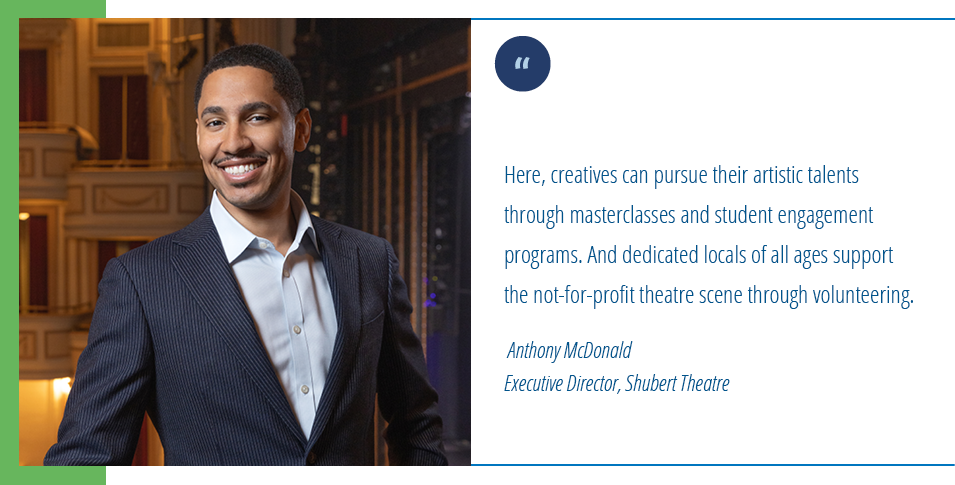
Local museums are innovating too, by connecting people to modern issues and using history to guide the future.
For example, Old New-Gate Prison & Copper Mine has taken a non-neutral stance on social justice issues, incorporating art and storytelling exhibits about today’s criminal justice system through the perspectives of people who have lived experience. The result is meaningful to visitors and staff alike.
With a surge of involvement from younger residents, Connecticut’s arts and culture scene is making big moves to not only create great work, but to make the arts experience more inclusive — igniting more inspiration in this connected community.
